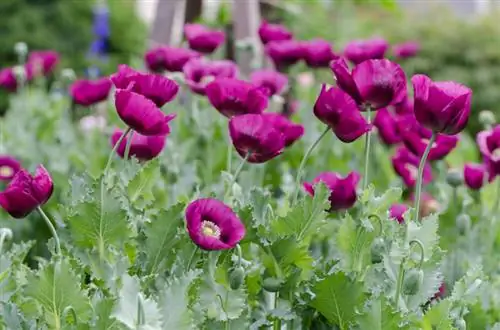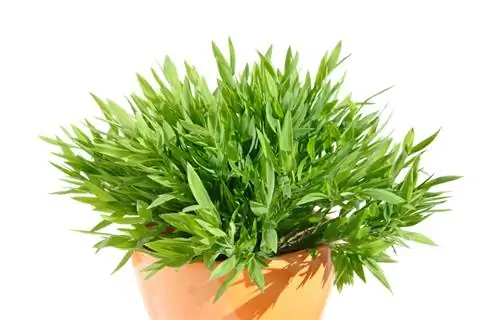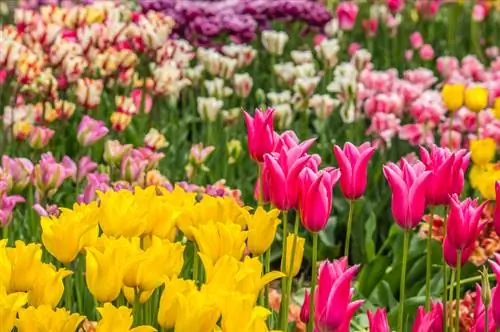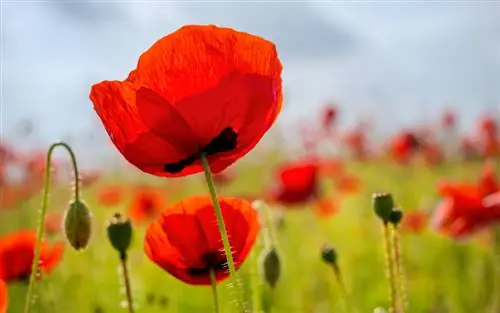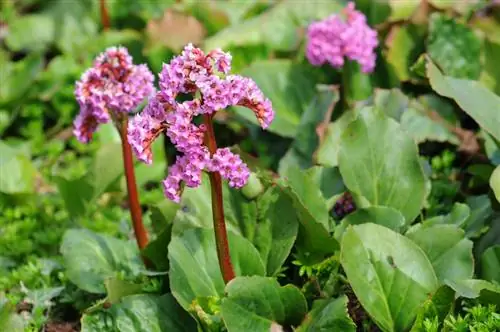- Author admin [email protected].
- Public 2023-12-16 16:46.
- Last modified 2025-01-23 11:20.
The poppy not only grows on the edge of the field, it is also an excellent plant for the flower garden. In addition to the red-flowering wild form, different colored cultivated forms are available, with heights ranging from around 20 cm to over a meter.
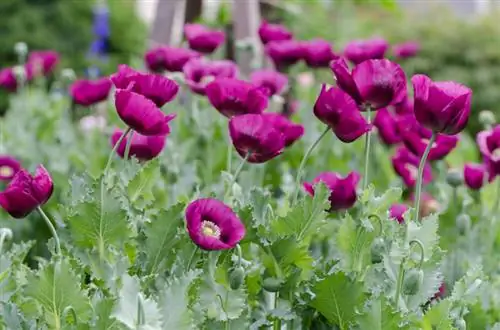
What types of poppies are suitable for the garden?
In principle, all types of poppies are suitable for the home garden, provided you offer them good living conditions. Poppy is quite robust and easy to care for. It just needs a lot of sun to bloom and dry, nutrient-poor soil. The Icelandic poppy is an exception; it prefers a temperate climate and slightly cooler temperatures.
The Turkish poppy is very popular. It adorns many gardens with its large, bright flowers. Since it is a perennial perennial, you can enjoy it for many years. With its long taproots, it doesn't like to be transplanted. Its flowers grow up to 15 cm large. Mature plants reach a height of around one meter and can often use support.
Peony poppies are reminiscent of peonies with their frilly flowers. These also gave him his name. Like the Turkish poppy, it is available in different colors. Yellow, orange, salmon-colored can be found in addition to the typical red in the Turkish poppy. You can choose from pale pink, purple or even black when it comes to peony poppies.
Poppy for cooler regions
White Alpine poppy is a very pretty and unusual ground cover. Mix a little gravel into the ground for him to feel comfortable. Although alpine poppies also love the sun, they do not require as much heat as other varieties. The Icelandic poppy also tolerates cooler climates quite well. In his homeland he isn't exactly pampered with warmth.
The most beautiful poppy varieties for the garden:
- white alpine poppy as ground cover
- bright red Turkish poppy
- Peony poppies with huge ruffled flowers
- robust Icelandic poppy for cooler regions
Tips & Tricks
Most poppy varieties prefer a sunny and warm location. If you live in a cool region, then simply plant the robust Iceland poppy or Alpine poppy as a ground cover.

